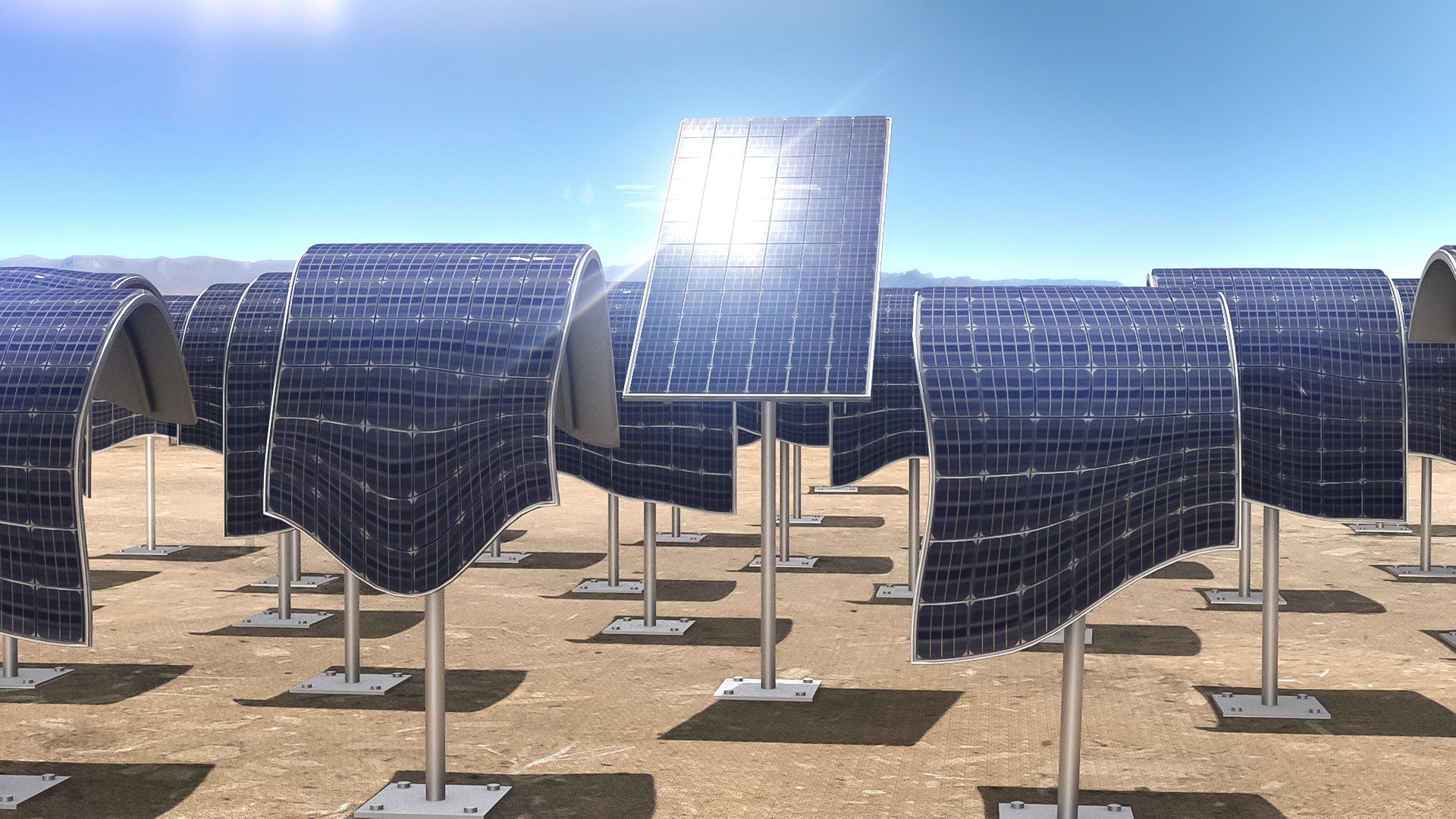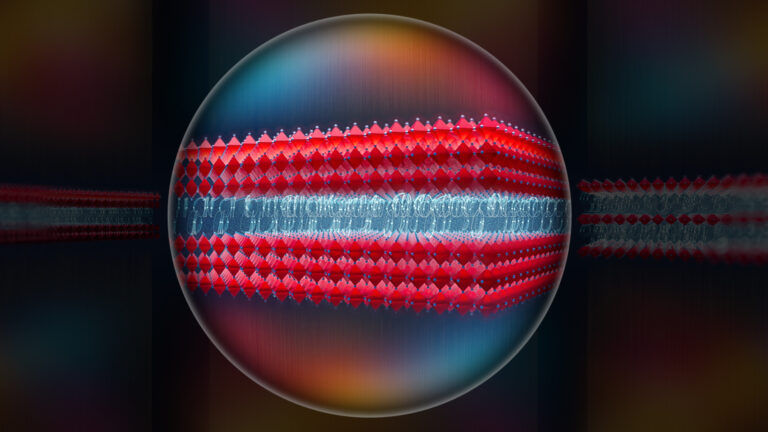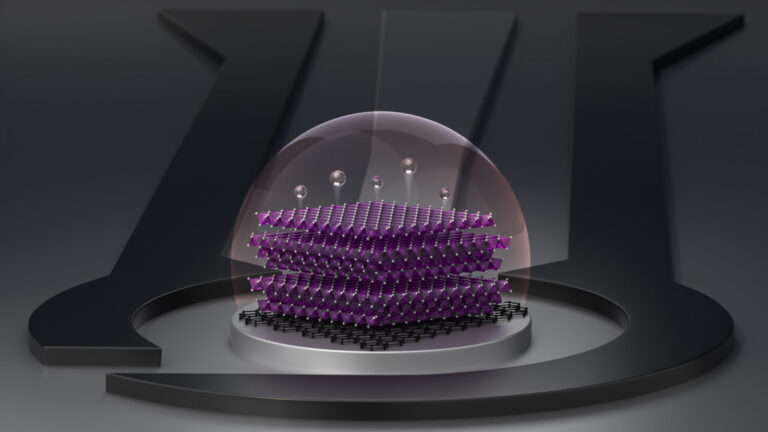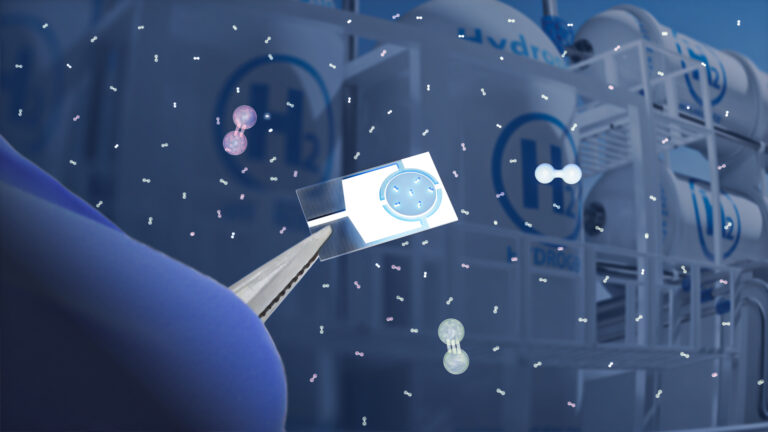Electrical Engineering | Material Science and Engineering
Best thermal stability and efficiency in organic solar cells
Multicomponent mixtures could provide organic solar cells that defy heat and achieve record efficiency.

A strategy utilizing multicomponent mixtures of materials called nonfullerene acceptors boosts the thermal stability of organic solar cells[1]. The approach developed by a KAUST-led team could make large-area organic photovoltaics easier to produce.
Nonfullerene acceptors (NFAs) have emerged as ideal components in organic photovoltaics, dramatically enhancing the device efficiency. The efficiencies of laboratory-scale devices and larger-area modules have improved rapidly over the last five years. Yet, when exposed to light and heat, NFA-based active layers become inherently unstable over time, which decreases device performance and hinders commercialization.
Organic solar cells rely on the active layer — a mixture of electron donor and acceptor molecules known as bulk heterojunction — to absorb light and produce electricity. When light strikes the heterojunction, it creates electron–hole pairs that dissociate at the donor–acceptor interface. Electrons move toward the acceptors while the positively charged holes move toward the donors. The resulting charge separation generates an electric current.
The heterojunction must have a specific nanostructure that is key for efficient charge separation and extraction. However, this nanostructure is often far from thermodynamic equilibrium, which causes it to change over time through the diffusion of the blend components. This diffusion promotes charge recombination, reducing device performance.
There are several approaches designed to enhance the thermal stability of organic solar cells, and most focus on exploiting molecular interactions or increasing the glass transition temperature. Bulk heterojunction blend films featuring NFAs with high glass transition temperatures can counteract long-range diffusion processes. However, short-range diffusion remains problematic.
Collaborator Christian Müller from Chalmers University of Technology in Sweden had shown that blending up to eight polycyclic aromatic hydrocarbons called perylenes produced mixtures that can yield a molecular glass[2]. This motivated the team led by Derya Baran and KAUST alumni Sri Paleti, now also at Chalmers, to explore the potential of acceptor mixtures containing more than two components for organic photovoltaics.
Inspired by bulk metallic glasses, which require three to five different metals to prevent crystallization, the researchers combined up to five NFAs with one donor polymer to generate blends with best device efficiencies of 17.6 percent.
Increasing the entropy of the mixture vastly improved the thermal stability of the solar cells, across various film thicknesses. Their devices even retained their performance after annealing at 130 degrees Celsius for 23 days under inert conditions.
“This improvement in stability is independent of the active layer thickness, up to 400 nm, which is unprecedented,” Paleti says.
The team plans to investigate whether their approach can help minimize the embedded carbon footprint of organic solar cells.
Reference
- Paleti, S.H.K., Hultmark, S., Han, J., Wen, Y., Xu, H., Chen, S., Järsvall, E., Jalan, I., Villalva, D. R., Sharma, A., Khan, J. I., Moons, E., Li, R., Yu, L., Gorenflot, J., Laquai, F., Müller, C. & Baran, D. Hexanary blends: a strategy towards thermally stable organic photovoltaics. Nature Communications 14, 4608 (2023).| article.
- Hultmark, S., Cravcenco, A., Kushwaha, K., Mallick, S., Erhart, P., Börjesson, K. & Müller, C. Vitrification of octonary perylene mixtures with ultralow fragility. Science Advances 7, eabi4659 (2021).| article.
You might also like

Computer Science
Sweat-sniffing sensor could make workouts smarter

Material Science and Engineering
Electron movie guides design of layered perovskite materials

Electrical Engineering
New tech detects dehydration by touching a screen

Material Science and Engineering
Remote region sensor for essential vitamin deficiency

Material Science and Engineering
Low-power hydrogen sensor detects leaks in an instant

Material Science and Engineering
Illuminating pathways to long-lived organic solar cells

Electrical Engineering
A new interface for efficient electronics

Electrical Engineering




